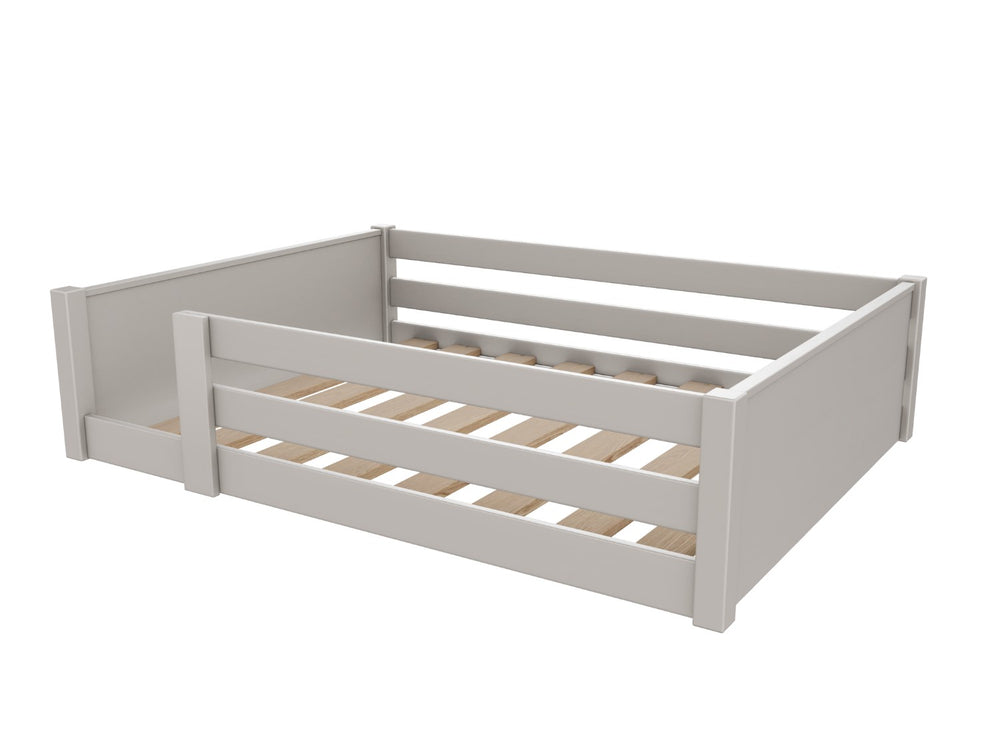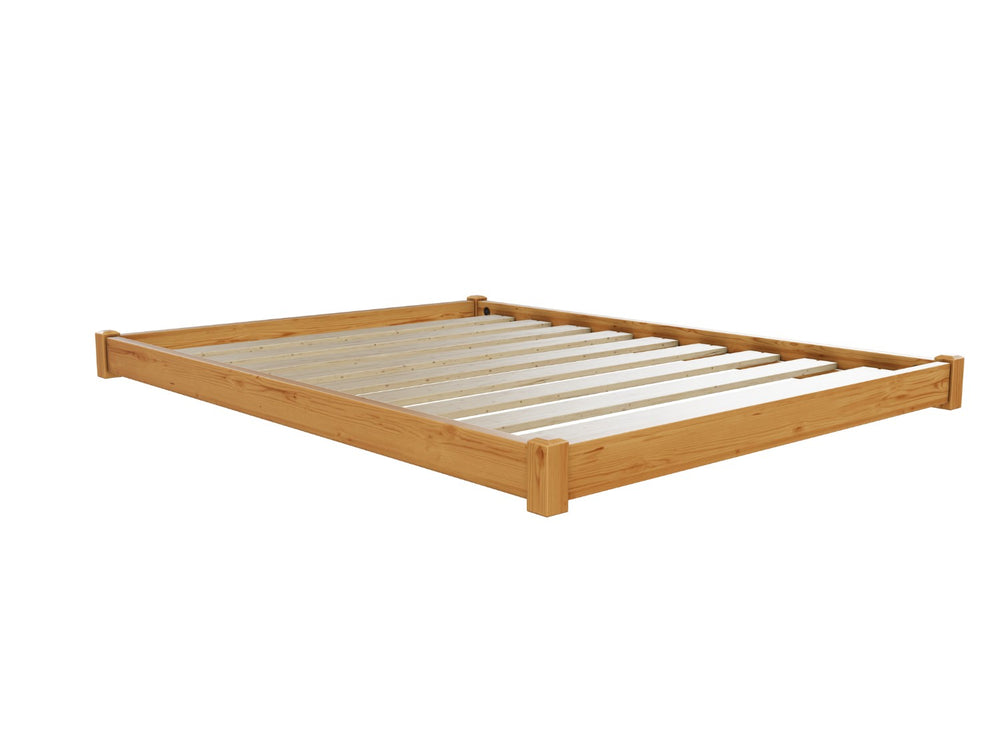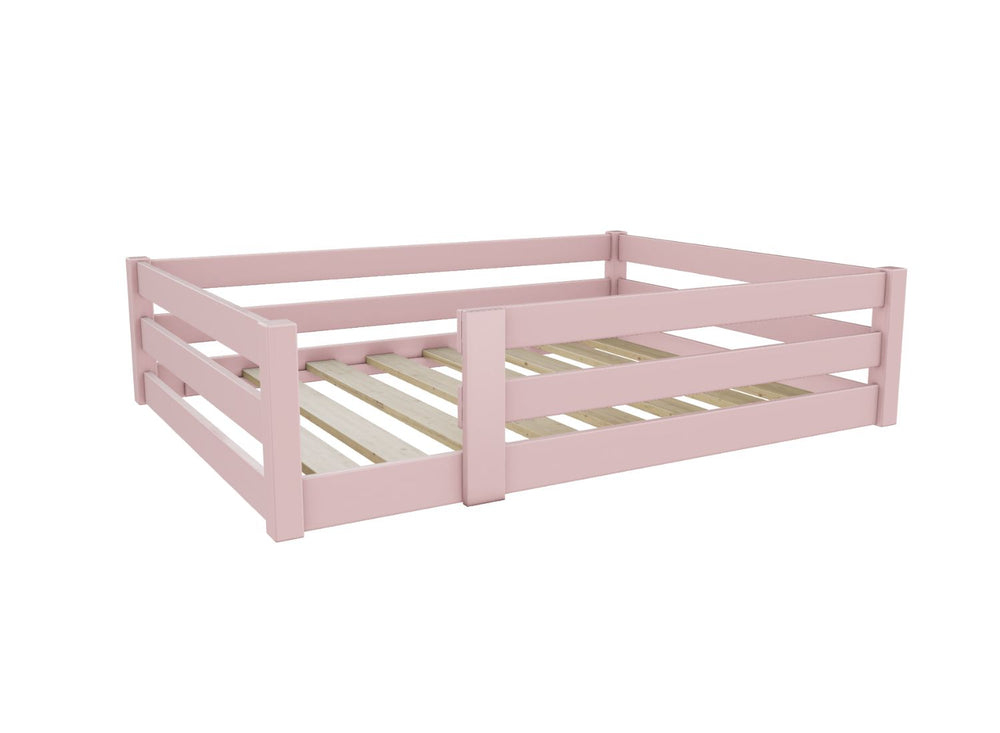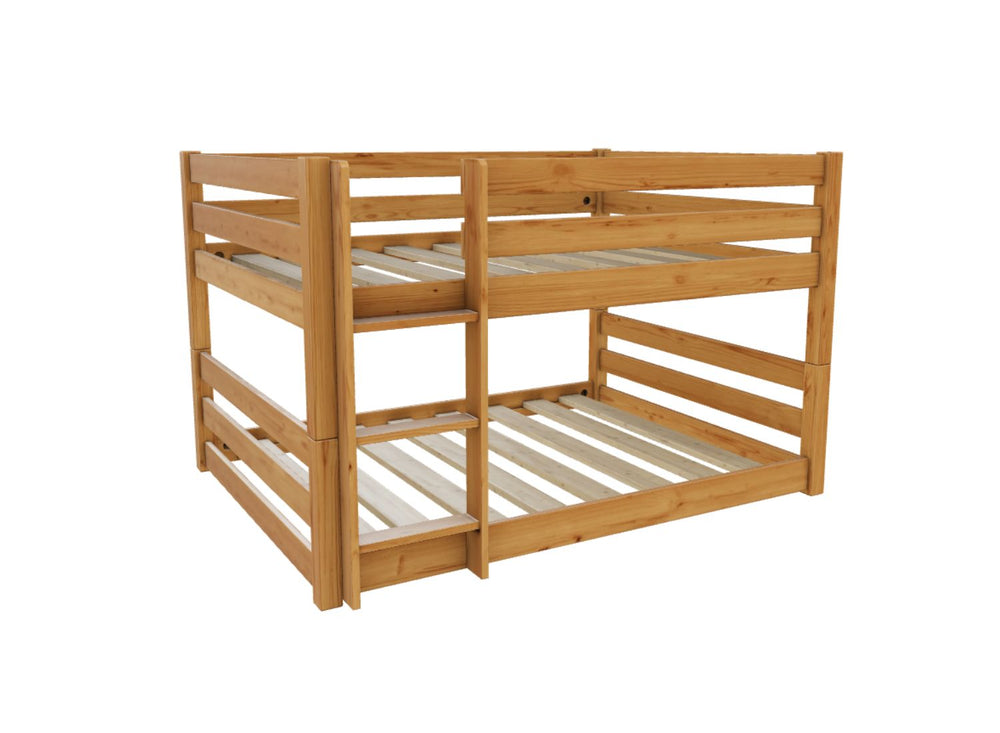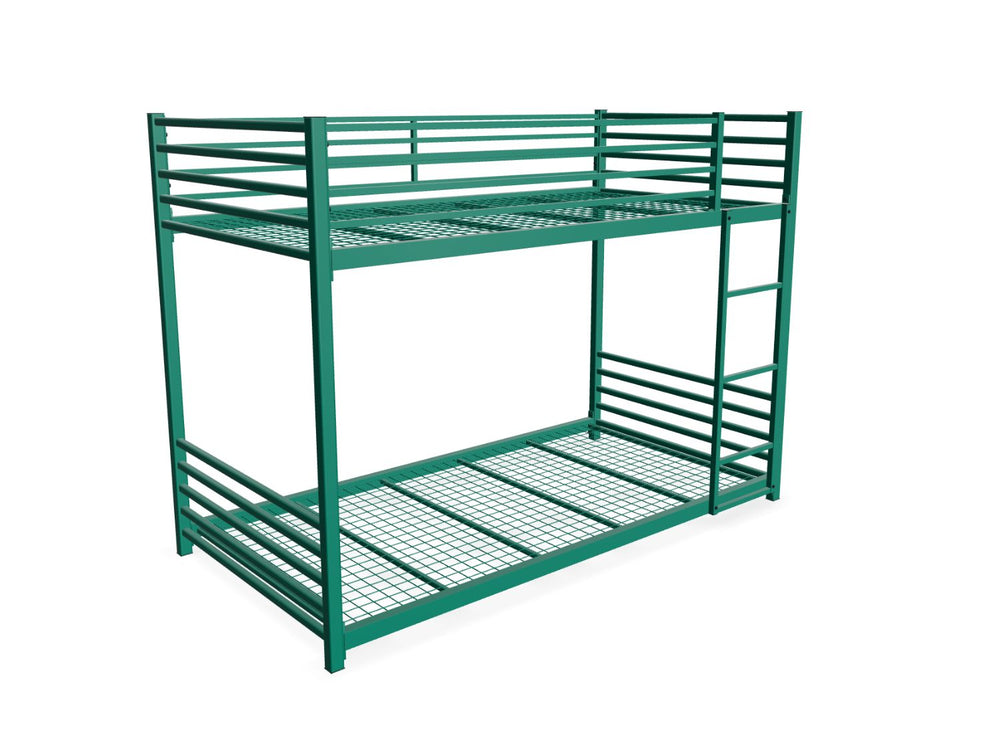
Choosing the right bed frame for your child's room is an important decision that impacts their comfort, safety, and the overall aesthetics of their space. Pine bed frames are an excellent choice for children's rooms, offering a blend of durability, safety, and versatility that other materials may not provide.
In this blog post, we'll explore the benefits of choosing a pine bed for children's rooms, discuss safety and durability considerations, present fun and colourful design ideas, and offer tips for transitioning from a crib to a pine bed frame.
If you are exploring wooden beds more generally and want to understand why natural materials remain a popular choice for family homes, our guide on wooden bed frames, natural style and timeless appeal covers the benefits of timber construction, durability, and timeless bedroom design.
Benefits of Choosing Pine Bed Frames for Children's Rooms
- Durability and Strength
Pine wood is known for its durability and strength, making it an ideal material for children's furniture. Kids are often rough on their surroundings, and a sturdy pine bed frame can withstand the wear and tear of daily use. Pine's natural resilience ensures that the bed frame will last for many years, even as your child grows and their needs change.
- Eco-Friendly and Sustainable
Pine is a fast-growing, renewable resource, making it an environmentally friendly choice. Choosing a pine bed frame for your child's room supports sustainable forestry practices and helps reduce the environmental impact. Additionally, pine wood is often less treated with chemicals compared to other materials, making it a healthier option for your child's sleeping environment.
- Versatility in Design
Pine wood is highly versatile and can be easily customized to fit various design preferences. Whether you prefer a natural wood finish or want to paint the bed frame in bright, fun colours, pine can be adapted to match the décor of your child's room. This flexibility allows you to create a unique and personalized space for your child.
- Affordability
Compared to hardwoods like oak or maple, pine is generally more affordable. This cost-effectiveness makes it an attractive option for parents who want to invest in quality furniture without breaking the bank. The lower cost does not mean a compromise on quality; pine frames offer excellent value for money.
Safety and Durability Considerations
- Smooth and Rounded Edges
When selecting a bed frame for a child's room, safety is a top priority. Pine beds often feature smooth, rounded edges, reducing the risk of injury from sharp corners. Ensuring that the bed frame has these safety features can provide peace of mind, knowing that your child is less likely to get hurt while playing around the bed.
- Non-Toxic Finishes
It's crucial to choose a bed frame with non-toxic finishes, especially for children's furniture. Many pine frames are finished with water-based, low-VOC (volatile organic compounds) paints and sealants, which are safer for children. These finishes minimize the exposure to harmful chemicals, contributing to a healthier indoor environment.
- Sturdy Construction
Pine beds are known for their sturdy construction. Look for bed frames that use solid joints, such as mortise and tenon or dovetail joints, which provide enhanced stability and longevity. A well-constructed pine bed frame can withstand the energetic activities of children, from jumping on the bed to playful roughhousing.
- Weight Capacity
Ensure that the pine bed frame you choose has a suitable weight capacity for your child. Many frames are designed to support a significant amount of weight, accommodating not only your child but also their friends during sleepovers or parents during bedtime stories.

Product: Shelton Shaker Bed Frame Finished in Stained Antique
Fun and Colourful Design Ideas
- Painted Bed Frames
One of the best aspects of pine wood is its ability to take paint well. You can create a vibrant and cheerful atmosphere in your child's room by painting the bed frame in their favourite colours. Consider themes such as:
- Rainbow: Paint each part of the bed frame in different bright colours for a fun, lively look.
- Pastel Palette: Use soft pastel shades for a soothing and calming environment.
- Character Themes: Paint the bed frame to match your child's favourite cartoon character or movie.
- Natural and Rustic
For a more timeless and versatile look, keep the natural wood finish of the pine bed frame. You can enhance the wood grain with a clear or light-coloured stain, adding a touch of rustic charm. This design works well with various room decors and can easily be updated with new bedding or accessories as your child's tastes change.
- DIY Decorations
Encourage your child's creativity by involving them in decorating their bed frame. Provide materials like stickers, stencils, or decals that they can use to personalize their bed. This not only makes the bed frame unique but also gives your child a sense of ownership and pride in their space.
- Themed Bed Frames
Consider creating a themed bed frame that reflects your child's interests. Some ideas include:
- Adventure: Design a bed frame that resembles a treehouse or a pirate ship.
- Fairy-tale: Create a princess canopy bed with draped fabric and delicate details.
- Space Explorer: Paint the bed frame with stars, planets, and rockets for an outer space theme.
Tips for Transitioning from a Crib to a Pine Bed Frame
- Timing the Transition
The right time to transition from a crib to a bed varies for each child, but it typically happens between 18 months and 3 years old. Signs that your child is ready include climbing out of the crib, showing interest in a big-kid bed, or outgrowing the crib.
- Make It Exciting
Make the transition exciting by involving your child in the process. Let them choose their new bed frame or bedding to make them feel more invested in the change. Celebrate the milestone with a special bedtime story or a small gift.
- Ensure Safety
Safety is paramount during the transition. Use a toddler bed rail to prevent your child from rolling out of bed. Place the bed frame against a wall or in a corner for added security. Ensure the bed is low to the ground to minimize injury if your child does fall.
- Maintain a Routine
Keep the bedtime routine consistent to help your child adjust to their new bed. Familiar activities such as reading a book, singing a lullaby, or cuddling can provide comfort and reassurance during the transition.
- Gradual Introduction
If your child is hesitant, consider a gradual introduction. Start with naps in the new bed to help them get used to it before transitioning to night-time sleep. You can also place the new bed frame in the same spot where the crib was to maintain a sense of familiarity.
- Positive Reinforcement
Encourage and praise your child for sleeping in their new bed. Use positive reinforcement such as stickers, a reward chart, or extra story time to celebrate their success and build their confidence.

Product: Yaxham Wooden Bed Frame, High Rail, in Mahogany
Conclusion
Pine bed frames are an ideal choice for children's rooms due to their durability, safety, versatility, and affordability. The natural strength of pine wood ensures that the bed frame can withstand the energetic activities of children, while its eco-friendly properties make it a responsible choice for environmentally conscious parents.
Transitioning from a crib to a pine bed frame can be a smooth and exciting experience with the right approach. By timing the transition appropriately, maintaining a consistent routine, and using positive reinforcement, you can help your child feel comfortable and confident in their new bed.
For parents choosing furniture that will last beyond early childhood, understanding the wider benefits of wooden bed frames can be helpful. Our guide on wooden bed frames, natural style and timeless appeal explores why solid timber beds continue to be a trusted choice for long-term use.
In summary, investing in a pine bed frame for your child's room is a decision that combines practicality with creativity, ensuring a safe, comfortable, and aesthetically pleasing sleeping space that can grow with your child.

Shane Cousins

Marketing Executive
For the past five years, Shane has been a valued member of the Endurance Beds team, drawing on his degree and background in consumer insight research to shape engaging, design-focused content. He loves helping customers spark their own creativity, from colour matching to discovering new stylistic approaches for their bedrooms. "Working for a bed company taught me so much more than just product details. It introduced me to the science of sleep, the art of product matching, and how small choices can transform rest. I’ve since developed into a bit of a sleep expert, using what I’ve learned to share honest, practical advice through my content."


